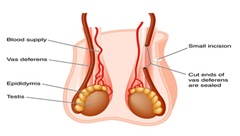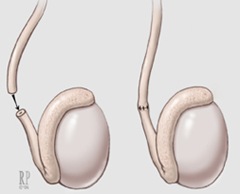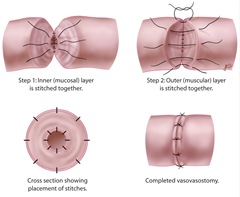Specifics of Microsurgical Vasectomy Reversal
Vasovasostomy
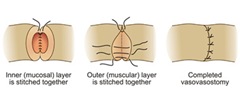 The vasovasostomy is the standard and most commonly performed vasectomy reversal surgery. The separated ends of the vas deferens are identified. A sample of the vas fluid is examined under a microscope and is considered to be of good quality if its’ consistency is clear and it contains healthy sperm. The finding of motile sperm is an even better sign. The cut ends of the vas deferens are then stitched together.
The vasovasostomy is the standard and most commonly performed vasectomy reversal surgery. The separated ends of the vas deferens are identified. A sample of the vas fluid is examined under a microscope and is considered to be of good quality if its’ consistency is clear and it contains healthy sperm. The finding of motile sperm is an even better sign. The cut ends of the vas deferens are then stitched together.
Dr. Larish uses a high-powered surgical microscope and six sutures of 10-0 or 11-0 diameter (finer than a human hair) to reconnect the inner lumen and the outer layer of the vas deferens. This is called the Multi-layer Microdot technique. This advanced technique has contributed to Dr. Larish’s high success rates and low rate of scarring. It has also minimized the patient’s recovery time. See Dr. Larish perform a vasovasectomy.
Vasoepididymostomy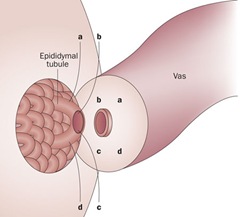
In about 30% of Dr. Larish’s vasectomy reversal cases, no fluid can be expressed from the vas deferens or there are no sperm in the fluid. It must then be concluded that there is a blockage in the epididymis closer to the testicle. The blockage will not allow sperm to pass through to the vas deferens. Blockage in the vas deferens may be due to inflammation, high pressure in the epididymis or scarring following the vasectomy. This blockage must be bypassed by connecting the other end of the vas deferens directly to the epididymis. This procedure is called a vasoepididymostomy.
Dr. Larish currently employs the state-of-the-art Microsurgical Longitudinal Intussusception Vasoepdidymostomy technique. This technique is also referred to as the “two-suture longitudinal intussusception” technique and requires two 10-0 or 11-0 sutures. The technique permits a larger opening between the extremely small epididymal tubule and the larger vas deferens tubule permitting the two to be connected.
This procedure is one of the most complex and demanding in all of microsurgery. Only physicians who perform vasoepididymostomies on a regular basis should attempt the surgery. For Dr. Larish , this procedure is routine. His success rates are equivalent to those of the world’s leading male fertility microsurgeons. He has achieved 87% patency rate in his vasoepididymostomy patients. See Dr. Larish perform a vasoepididymostomy.
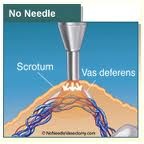 Regarding Laser Vasectomy Reversals
Regarding Laser Vasectomy Reversals
This technique was popularized in the 1990s. Laser surgery works well for select blood vessel surgeries in cardiovascular medicine. However, research shows that laser vasectomy reversals have lower success rates. Laser vasectomy reversals may, in fact, cause more complications and damage to the vasectomy reversal site. Dr. Larish does not use this method of reversal.
Contact us about vasectomy reversal:
If you are interested in learning more about vasectomy reversal microsurgery, call Dr. Larish, the most experienced micro-surgeon for vasectomy reversal in NYC.


